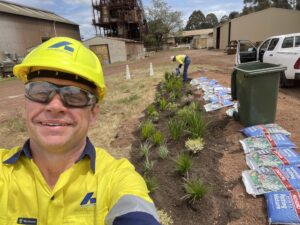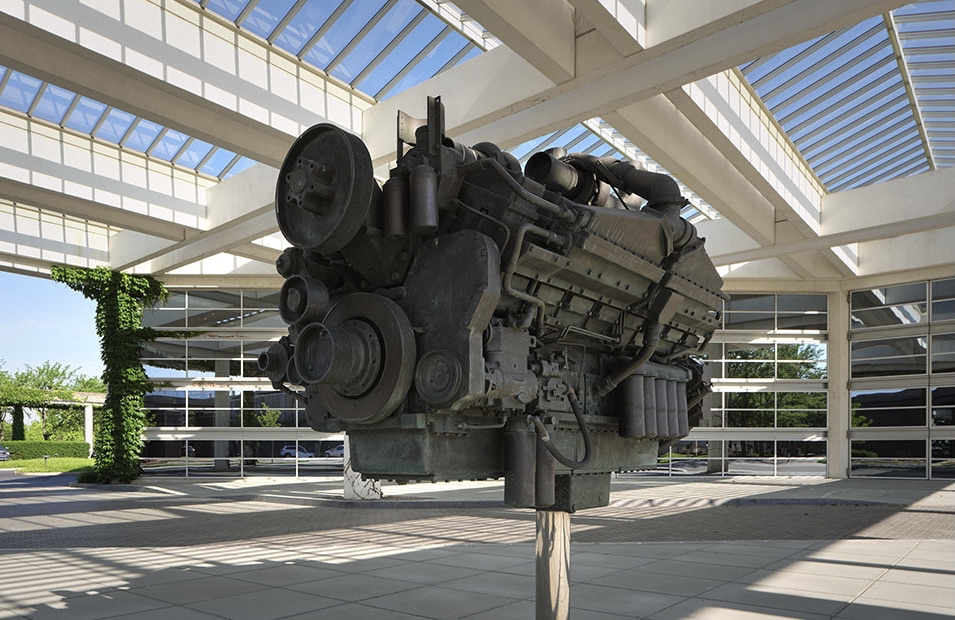Bradken has set itself the ambitious goal of becoming carbon-neutral by 2030.
The latest report from the Intergovernmental Panel on Climate Change confirmed that the window for transformative climate action is rapidly closing.
The Australian Government has pledged $20 billion towards decarbonising the country’s energy grid, aiming for 82 per cent renewables by 2030, in line with the greater goal of net-zero carbon emissions by 2050. Indeed, net zero by 2050 is a goal shared by many major industrial companies.
But 2050 is a long way off, and the planet isn’t getting any cooler. That’s why Bradken has set itself the ambitious goal of becoming carbon neutral by 2030.
“The most exciting part is that it’s actually going to make a difference,” Bradken’s Carbon-Neutral 2030 project director Kirsty Morgan told Australian Mining.
“Our steel foundry and fabrication operations are energy-intensive, so it’s the perfect opportunity to make significant change. Our goal is for Bradken to be carbon-neutral for Scope 1 and 2 emissions by 2030.”
Scope 1 and 2 emissions are direct and indirect emissions generated by a company’s operations, while Scope 3 emissions come from upstream and downstream sources.
So by cutting its own carbon output, Bradken is also helping to lower its customers’ Scope 3 emissions.
“(The year) 2030 is quite close, but Bradken’s ethos is that we don’t back down from a challenge,” Morgan said.
“Taking these steps now means we’re doing our part to safeguard our planet and deliver an optimised future for our customers, ourselves and our communities.”
For Bradken, this all represents much more than just a peripheral objective.
Morgan’s role is a new one, with her team specifically dedicated to the 2030 target. The company has also pledged $US50 million ($75.6 million) in capital projects and resourcing, and has a team of sustainability business partners across the globe to support sites.
Bradken’s commitment to a carbon-neutral 2030 goes right to the top. Chief executive officer (CEO) Sean Winstone is also a sustainability champion, recognising sustainability efforts across the company’s manufacturing sites with the annual CEO Sustainability Award.
“This year the dedicated team at Wundowie, Western Australia, has made some remarkable achievements in advancing Bradken’s sustainability agenda,” Winstone said. “The data speaks for itself; despite increasing production by about 13 per cent in the past year, the site was able to reduce its overall energy consumption and CO2 emissions, reducing its emissions intensity by 12 per cent.”

Morgan said that senior leadership is completely on board.
“Our 2030 target is deeply embedded in the business at every level,” she said.
A veritable titan in the industry, Bradken has operations across the globe. So where does one begin with such an ambitious environmental task?
“We’ve put our sustainability roadmap in place and we have three main pillars that we’re looking at,” Morgan said.
The first of those pillars is operational efficiency.
“We melt metal – it’s really resource-intensive,” Morgan said. “So, firstly, it’s about reducing the amount of energy used so we’re not wasting any in that process.
“We’re looking at the basics of how we make our products, especially energy-intensive processes like metal melting and heat treatment, and finding better ways to do it.
Measurement and reporting has been an integral part of this initial stage, with emissions intensity and furnace efficiency being tracked at all engineering and foundry sites to monitor progress.
The sustainability business partners are looking at available technologies to make site-specific process improvements.
“When you’re making your systems more efficient, you’re using less energy – and energy prices are going up, so we’re balancing these cost impacts,” Morgan said.
The second pillar is procuring renewables.
“The first pillar is about ensuring we’re not wasting any energy, and the second is about replacing that energy with renewables,” Morgan said.
“We’re actively procuring solar, hydro and wind power to increase the renewable energy we can supply to our operations.
“Bradken is actually very good at this. Our foundry and manufacturing site in Mont-Joli, Canada, is already powered by 100 per cent hydroelectricity.
“And our Coimbatore site in India is powered by 75 per cent renewable energy, which cuts annual carbon emissions by 7700 tonnes.”
Closer to home, Bradken’s Mt Thorley mining services workshop in the NSW Hunter Valley recently installed 250 solar panels to help deliver an annual CO2 emission reduction of 19 per cent, bringing the company closer to carbon neutrality.
The third pillar is upgrading plant and equipment.
“We’re exploring options to convert our equipment to cleaner, lower-emissions technologies,” Morgan said.
“One example of this is moving from gas-powered to renewable-electricity-powered heat treatment ovens at our sites.”
This is just the start for Bradken, which aims to similarly transform its other operations, such as its Merlimau site in Malaysia.
Achieving carbon neutrality by 2030 is an ambitious goal, but the company has the experience, knowledge, technology and people to see it through.
Morgan is expecting to be more than half-way to the goal by 2025.
“Bradken has been around for over 100 years and in that time the global population has quadrupled,” Morgan said. “We know so much more now about our impact on the planet, and we feel the urgency to do something. Climate change is a global emergency, with the planet and the people all at risk.
“The sector is aiming to be carbon-neutral by 2050. We’re more ambitious.”
This feature appeared in the August 2023 issue of Australian Mining.



